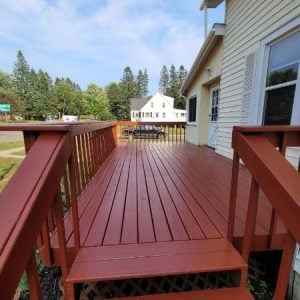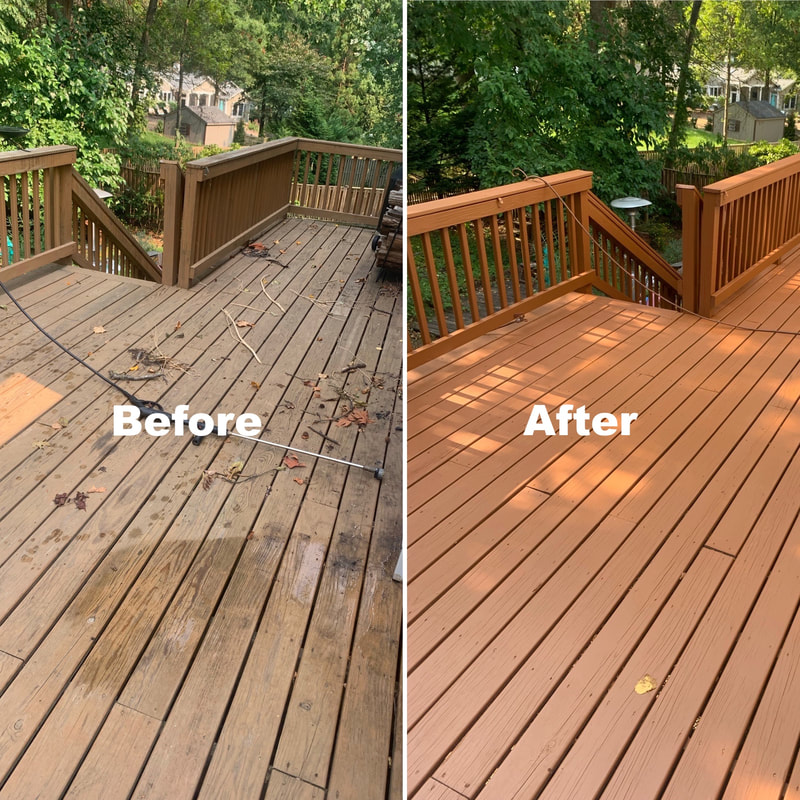Deck Discoloration 101: Every Little Thing You Required to Know for a Do It Yourself Project
From preparing the deck surface area to choosing the best type of discolor and understanding the application techniques, each action plays a crucial duty in attaining a professional finish. Join us as we unravel the essential standards and expert suggestions for mastering the art of deck discoloration, making sure a successful DIY task that will certainly leave your deck looking flawless.
Importance of Deck Discoloration
Deck staining is an important upkeep task that maintains the durability and appearance of exterior wood frameworks. Wooden decks are continuously subjected to severe components such as sunlight, snow, rainfall, and foot web traffic, every one of which can bring about deterioration gradually. By using a coat of tarnish to the deck's surface area, you create a protective barrier that aids prevent dampness infiltration, UV damages, and decomposing of the wood. This not only prolongs the lifespan of the deck but also maintains its aesthetic appeal.
It offers a chance to tailor the look of the deck by selecting from a variety of stain surfaces and colors. In essence, normal deck discoloration is a straightforward yet efficient method to ensure your deck stays structurally audio and aesthetically pleasing for years to come.
Deck Prep Work Steps

After cleaning and fixing, fining sand the deck is required to smooth out rough surfaces and open up the wood's pores to far better take in the tarnish. As soon as the deck is clean, completely dry, and smooth, safeguard any type of neighboring plants, furnishings, or surface areas with a decrease towel prior to applying the deck discolor.
Picking the Right Spot
Picking the suitable tarnish for your deck is an essential choice that directly impacts both its look and sturdiness. When choosing the ideal tarnish, there are numerous factors to think about to make sure an effective DIY job.
Firstly, you need to decide between clear, semi-transparent, and strong stains. Transparent discolorations permit the all-natural grain of the wood to reveal via however provide minimal defense versus UV rays and wetness. Semi-transparent stains provide a concession between shade and defense, while solid stains supply one of the most protection yet cover the timber grain.
Next, take into consideration the sort of wood your deck is made of, as various spots work much better with specific wood varieties. For instance, cedar and redwood decks commonly look finest with a clear or semi-transparent stain to highlight their all-natural charm. Pressure-treated wood may gain from a strong stain to hide imperfections.
Lastly, consider the climate in your location. If you experience severe winter seasons or extreme sunlight, select a discolor with UV defense and resistance to severe weather problems. By meticulously considering these aspects, you can choose a discolor that boosts your deck's aesthetics and long life.

Applying Stain Properly
When considering the application of stain to your deck, it is important to pay very close attention to the specific features of the tarnish selected and just how it engages with the type of wood and ecological conditions previously mulled over. Before beginning the staining process, guarantee that the deck surface area is clean, completely dry, and devoid of any kind of previous finishes or particles. It is recommended to check the picked discolor on a little low-profile location of the deck to make sure compatibility and achieve the preferred shade and finish.
Apply the stain along the size of the deck boards to protect against unequal pooling - deck cleaning nashville. It is critical to function with the wood grain to boost the all-natural charm of the deck and allow for far better infiltration of the stain.
Maintenance and Treatment Tips

An additional critical element of deck maintenance is protecting it from the components. Think about applying a water-resistant sealer every few years to shield the wood from dampness damages. Additionally, resolving any type of mold or mold quickly is important to stop them from triggering structural damage to your deck. On a regular basis trimming nearby vegetation can also protect against leaves and branches from gathering fence cleaning near me on your deck and triggering potential damage.
Conclusion
Finally, deck staining is a crucial step in keeping the appearance and durability of your outdoor area. By effectively preparing the deck, choosing the ideal tarnish, using it correctly, and complying with maintenance ideas, you can ensure a resilient and lovely coating that will certainly last for several years ahead. Bear in mind to routinely care and check for your stained deck to keep it looking its finest.
Join us as we unwind the crucial standards and expert pointers for mastering the art of deck discoloration, ensuring a successful DIY job that will leave your deck looking flawless. - fence cleaning near me
In essence, regular deck discoloration is a straightforward yet reliable means to ensure your deck remains structurally sound and aesthetically pleasing for years to come.
When the deck is clean, dry, and smooth, protect any type of neighboring plants, furnishings, or surface areas with a decrease fabric before using the deck stain.Following, take into consideration the type of wood your deck is made of, as various discolorations function much better with specific timber varieties.When taking into consideration the application of tarnish to your deck, it is necessary to pay close interest to the particular characteristics of the tarnish selected and exactly how it connects with the type of timber and ecological conditions previously pondered.